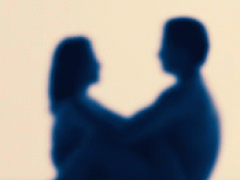Decoding Female Desire: What Makes Us Tick?
Female sexuality isn't well understood, even by scientists: examining the biology of arousal.

The cover story of this week's New York Times Magazine is about female desire—why do women get aroused, the article asks. The answer? No one really knows.
The piece describes the research of three leading female sexologists whose three different theories are at once at odds and overlapping. To illustrate how confusing female sexual response is the piece describes a study performed by Meredith Chivers, in which she showed various sexual images to men and women and measured their response by recording the blood flow to the penis and vagina, and at the same time asking them to report how aroused they were.
No matter what [the women's] self-proclaimed sexual orientation, they showed, on the whole, strong and swift genital arousal when the screen offered men with men, women with women and women with men. They responded objectively much more to the exercising woman than to the strolling man, and their blood flow rose quickly — and markedly, though to a lesser degree than during all the human scenes except the footage of the ambling, strapping man — as they watched the apes. And with the women, especially the straight women, mind and genitals seemed scarcely to belong to the same person. The readings from the plethysmograph and the keypad weren’t in much accord. During shots of lesbian coupling, heterosexual women reported less excitement than their vaginas indicated; watching gay men, they reported a great deal less; and viewing heterosexual intercourse, they reported much more. Among the lesbian volunteers, the two readings converged when women appeared on the screen. But when the films featured only men, the lesbians reported less engagement than the plethysmograph recorded. Whether straight or gay, the women claimed almost no arousal whatsoever while staring at the bonobos.
So women's brains and bodies are not aroused by the same things. But what does that mean? And do these differences arise from innate or cultural causes? In an upcoming paper quoted in the Times, Chivers gives an evolutionary explanation:
To reduce discomfort, and the possibility of injury, during vaginal penetration. . . . Ancestral women who did not show an automatic vaginal response to sexual cues may have been more likely to experience injuries during unwanted vaginal penetration that resulted in illness, infertility or even death, and thus would be less likely to have passed on this trait to their offspring.
The other two sexologists have different takes. Lisa Diamond believes that women's sexuality is much more flexible than is generally understood, and that women are more turned on by emotional intimacy. Marta Meana works on the theory that female lust hinges on narcissism—that is, being desired.
The piece offers a fascinating glimpse into research on female arousal, but ultimately doesn’t offer answers. In the final paragraphs the author wonders,
How many [studies] could be done by all the sexologists in the world who focus on female desire, whether they were wiring women with plethysmographs or mapping the activity of their brains in fM.R.I. scanners or fitting them with goggles or giving them questionnaires or following their erotic lives for years?... Could any conclusion encompass the erotic drives of even one woman?
We don't know the answer, but it certainly makes for good reading. Click here for the full story at the New York Times.

